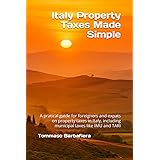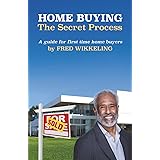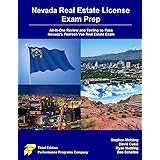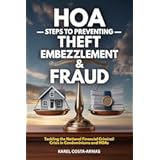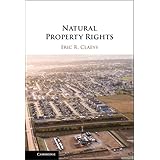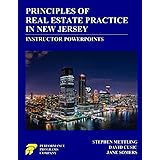Have you ever wondered why traditional financial advice often clashes with the strategies used by the truly wealthy? Perhaps you’ve diligently saved your money, only to see its purchasing power erode due to inflation, or watched your bank account yield negligible returns. Many of us are taught to view debt as a burden, a financial liability to be avoided at all costs. But what if there was another way? What if debt, when used strategically, could actually be a powerful engine for wealth creation and unlock unparalleled real estate success?
The accompanying video, featuring insights from financial experts like Ken McElroy and Tom Wheelwright, delves deep into this very concept. They reveal how they navigate the financial system, leverage other people’s money (OPM), and utilize sophisticated strategies like cash-out refinancing and depreciation to not only build substantial wealth but also pay little to no taxes. This isn’t about cutting corners; it’s about understanding and playing by the rules that the government itself has established to incentivize certain economic activities.
Understanding the Financial System: It’s All About Leveraging Debt
In the traditional financial landscape, individuals deposit their hard-earned paychecks into banks or invest in pensions and insurance products. These institutions then act as intermediaries, pooling this vast amount of “other people’s money” (OPM) and lending it out. For instance, a bank might offer you a mere 1% interest (often even less) on your savings. Yet, they simultaneously charge borrowers, like real estate investors, around 4% or more for loans. This seemingly small difference of 3% represents a significant profit margin for the bank, effectively making money on *your* money.
1. **The Flow of Capital:** This system is foundational. Banks, wealth managers, and pension funds constantly seek opportunities to deploy this capital. They need borrowers and investors to keep the gears turning. This creates a critical dynamic where smart investors can tap into this readily available pool of funds.
2. **Debt as an Asset:** While individuals often perceive debt as a personal burden, in the context of investment, it’s a critical tool. For the bank, *your* mortgage or credit card balance is an asset. For the savvy investor, securing debt to acquire income-producing assets transforms that debt into a catalyst for growth. The key lies in using debt to acquire assets that generate more income than the debt costs.
Mastering Debt for Sustainable Real Estate Success
The successful deployment of debt is a core tenet of advanced real estate investment. Ken McElroy, for example, shares his experience with significant projects, including $300 million in construction in Arizona alone. He highlights that no individual, or even a small partnership, can finance such ventures solely with their own checking account. This necessitates a strategic approach to both debt and equity.
1. **Categorizing Debt by Risk:** Not all debt is created equal. Lenders categorize debt based on risk. For instance, obtaining financing for new construction, like Ken’s Arizona projects, is inherently riskier for a bank than securing debt for an existing, revenue-generating property. Institutional lenders or government-backed entities like Fannie Mae and Freddie Mac often provide more sophisticated financing options for established assets, reflecting lower perceived risk.
2. **Trusting Your Asset:** A fundamental shift in perspective for strategic investors is their relationship with debt. Fear of debt often stems from a lack of trust in the underlying asset’s ability to generate sufficient income to cover payments. Experienced investors, having thoroughly researched and analyzed their acquisitions, develop an unwavering trust in their assets. This conviction allows them to confidently leverage substantial debt, knowing the asset itself will service and eventually grow their returns.
3. **The Purpose of Debt:** As explored in the video, the sole purpose for an investor to take on debt should be to acquire an asset that produces income or reduces an expense. Debt should never be used to finance a liability that drains cash flow. This distinction is crucial for building sustainable wealth rather than accumulating financial burdens.
The Power of Depreciation: A Cornerstone of Tax Optimization
One of the most powerful advantages of real estate investment in the United States is the concept of depreciation. The government doesn’t just allow depreciation; it actively *incentivizes* it to encourage the development and maintenance of housing. This is because governments worldwide recognize their inadequacy in providing sufficient housing, thus delegating this responsibility largely to the private sector.
1. **Understanding Depreciation Mechanics:** The tax code allows investors to depreciate the cost of buildings (excluding land) over a period of 27.5 years for residential rental properties. For example, if an apartment building is purchased for $30 million, and $2.5 million is allocated to the land (which is not depreciable), the remaining $27.5 million can be depreciated. This could translate to approximately $1 million in depreciation expense annually.
2. **Creating a “Paper Loss”:** Here’s where it gets particularly interesting for tax optimization. Even if a property generates significant cash flow—say, $700,000 annually—the $1 million in depreciation can create a reported tax loss of $300,000 for the partnership. This means investors can receive substantial cash distributions while legally reporting a loss, effectively deferring or minimizing their tax obligations. Ken McElroy and his partner, for instance, have deferred paying income tax for at least 10 years by consistently applying these strategies through their buy and hold approach.
3. **Government Incentives & Tax Quadrants:** The tax law is less about how much tax to pay and more about how to redistribute taxes based on economic incentives. The video explains Robert Kiyosaki’s four quadrants of income:
-
Employee (E): Typically pays the highest tax rates, often around 40% globally, as consumers are heavily taxed.
-
Self-Employed (S): Can face even higher rates, sometimes up to 60%, especially if they don’t leverage deductions effectively.
-
Big Business Owner (B): Pays significantly less, around 20%, because governments incentivize job creation (typically 500+ employees).
-
Investor (I): Can achieve 0% tax rates. Governments incentivize investments in areas like housing, energy, agriculture, and technology, viewing these as essential for economic growth.
This framework highlights that the tax system is a roadmap for those who understand how to follow it, not a mandatory payment for everyone. It incentivizes those who provide what the government needs, like housing or jobs.
Unlocking Infinite Returns with Cash-Out Refinancing
The concept of “infinite returns” is a captivating strategy that truly differentiates advanced real estate investors. It involves strategically improving a property’s value and then leveraging that increased value to refinance the debt and pull out the initial equity, often with extra cash remaining. The original investors get their money back, while still retaining ownership and ongoing cash flow from the asset.
1. **The Value-Add Process:** Ken shares a powerful example of a property he acquired for $19 million with $15 million in debt and $4 million in equity. The Net Operating Income (NOI) was $700,000, leading to an annual income of $300,000 after debt payments. However, the property was not well-maintained. Ken implemented a “value-add” strategy: installing washers and dryers (generating $40 per unit), upgrading vacant units as they turned over, and enhancing amenities like landscaping and dog parks. These improvements systematically increased the property’s attractiveness and, crucially, its rental income.
2. **Boosting Net Operating Income (NOI):** After approximately three years of methodical improvements, Ken successfully raised the property’s NOI from $700,000 to $1 million. NOI is critical because banks base their loan amounts and property valuations on this figure. A higher NOI directly translates to a higher property valuation.
3. **The Refinance Event:** With the increased NOI, the bank re-appraised the property, valuing it at $25 million (up from $19 million). This allowed Ken to secure a new loan of $20 million. This new loan was then used to pay off the original $15 million debt, reimburse the investors their initial $4 million equity, and still leave an additional $1 million in cash. At this point, Ken and his partners had effectively retrieved all their initial equity plus an extra million, while still owning the cash-flowing property.
4. **Infinite Return Achieved:** With no equity remaining in the deal (all initial capital returned), any future cash flow from the property represents an “infinite return” because it’s generating income without any of the investor’s original capital tied up. While the debt payment increases with the larger loan, strategic management ensures cash flow remains positive, and depreciation continues to provide significant tax benefits. Ken notes he has successfully refinanced this particular property three times since purchasing it in 2005, continually extracting capital and growing NOI to $1.2 million and then $1.5 million.
Strategic Considerations for Astute Real Estate Investors
Beyond specific investment tactics, successful real estate success hinges on understanding broader economic trends and foundational financial principles.
1. **Fixed vs. Variable Rate Debt:** In an inflationary environment, securing fixed-rate debt is crucial. While central banks may label inflation as “transitory,” experienced investors recognize the benefit of locking in payments. Fixed-rate debt hedges against rising interest rates, ensuring predictable costs as inflation potentially drives up rental income and property values.
2. **Cash Flow is King:** The ultimate measure of any asset’s value, whether it’s a business, a stock, or real estate, is its cash flow. In business, it’s called a multiple; in stocks, a P/E ratio; in real estate, a cap rate. But at its core, every investment is valued by the income it generates. This fundamental truth underscores why investors like Ken focus intensely on strategies that boost Net Operating Income.
3. **Navigating the Housing Affordability Crisis:** The current market faces high land costs, supply chain issues, construction costs, and high rents, leading to significant scarcity and affordability challenges. Projections indicate a 7% rent growth next year, with similar increases expected in subsequent years. This imbalance, while problematic for renters, creates opportunities for investors who can provide quality housing. States like Texas, Arizona, Florida, and Idaho are experiencing growth as people seek more affordable living, highlighting regions ripe for strategic real estate investment.
4. **The Importance of Education and Team:** While the concepts can seem complex, they are not “rocket science” once understood. Building a strong team, comprising trusted accountants and legal advisors, is essential. However, the video emphasizes the importance of investors themselves understanding the financial language and principles rather than blindly relying on external experts. Mistakes are part of the learning process, but a solid foundation of financial education minimizes risks and maximizes opportunities in real estate investment.


